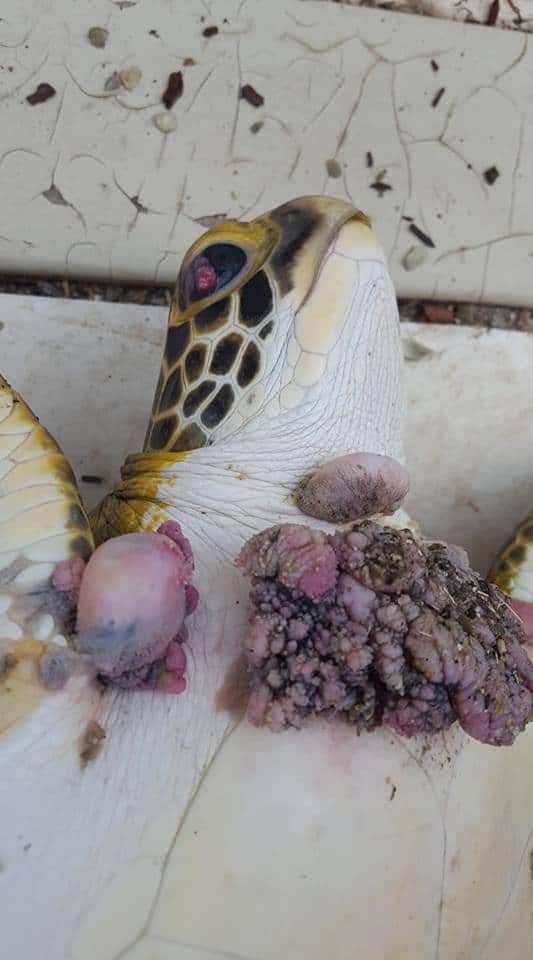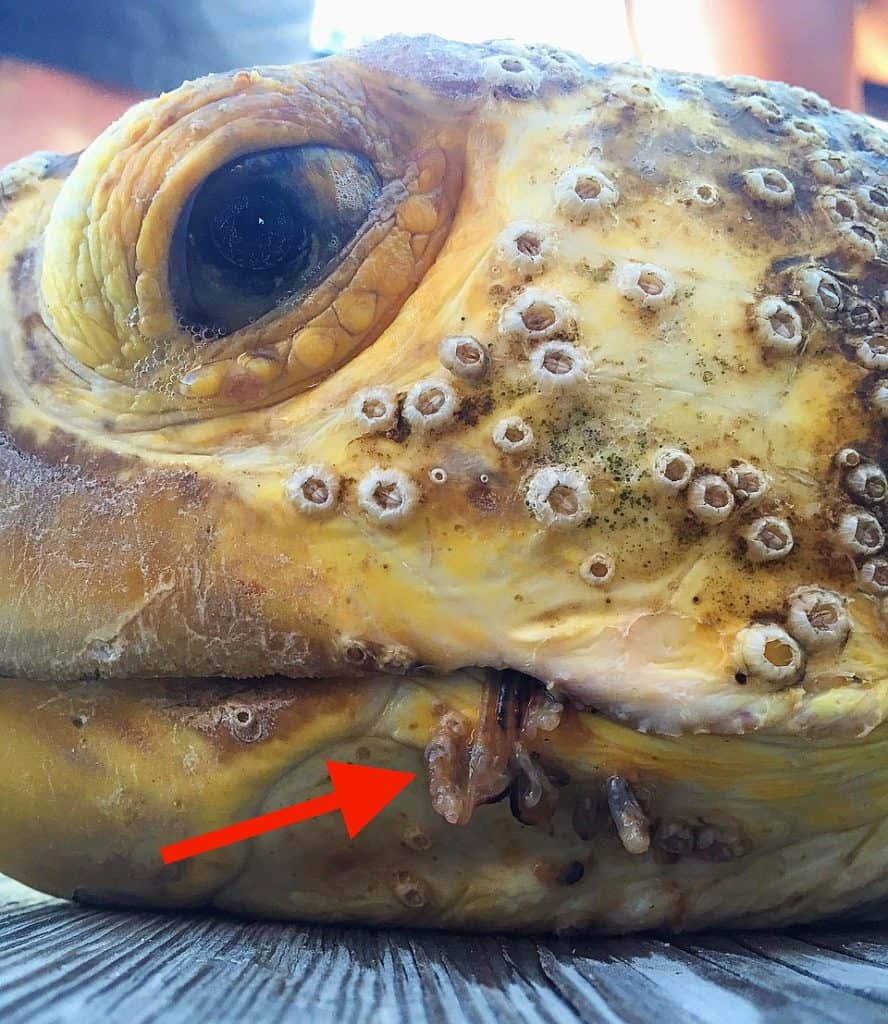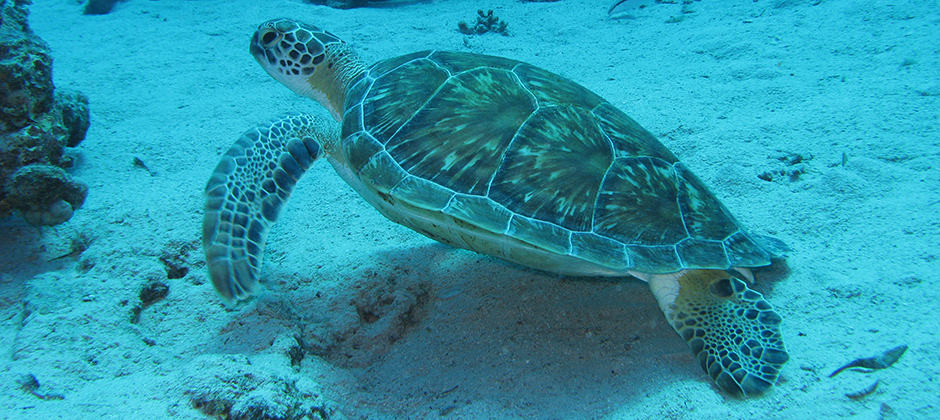Share this article
Leeches linked to sea turtle tumors
Leeches on sea turtles may play a role in the reptiles contracting a disease that causes tumors.
Scientists already had documented saltwater leeches showing up on loggerheads (Caretta caretta) and green sea turtles (Chelonia mydas). Some wondered if these leeches may be a vector of a herpesvirus, which could in turn make the turtles vulnerable to the tumor disease fibropapillomatosis, or FP.
Anna Savage, an associate professor of biology at the University of Central Florida, had been conducting research on chytrid fungus on amphibians, when she heard about these tumors in sea turtles from her colleague and co-author Kate Mansfield of the Marine Turtle Research Group.

FP causes sea turtles to develop tumors on their bodies, which can limit their health and mobility. Credit: Jake Kelley. Permit: MTP-231 and NMFS #19508
With undergraduate student Leah Rittenburg as lead author, Savage published a study in Diseases of Aquatic Organisms that investigated the disease and its connection to leeches.
“We have this huge dataset we can tap into, where we can look more specifically and quantitatively at whether or not there is a relationship between leeches, the associated herpesvirus and if the turtles have tumors,” Savage said.

Leah Rittenburg, an undergraduate student at UCF at the time, led the study looking at a relationship between leeches and sea turtle disease.
Credit: MTRG. Permit: MTP-231 and NMFS #19508
Since studies already linked the herpesvirus with FP, the team focused on two different things: the relationship between leeches and the herpesvirus and the relationship between leeches and tumors.
First, they looked to see if leeches they collected off loggerhead and green juvenile sea turtles in the Indian River Lagoon on the Atlantic Coast of Central Florida had the herpesvirus. “Marine leeches are very poorly studied, even though sea turtles are very heavily studied,” Savage said. “People are more interested in sea turtles than these gross leeches we find attached to them, which haven’t received as much attention.”
The team found that loggerheads tend to host a different leech species than green sea turtles. Green sea turtles, which are more likely to have FP, host leeches with a slightly higher prevalence of the herpesvirus, they found. The sample size was small, though, Savage cautioned.
“We need more extensive testing before we can really say conclusively that leeches in green turtles are more likely to have the virus,” she said. “But it does trend in that direction.”
While researchers can’t be positive that leeches led to the tumors — maybe tumors attracted the leeches — the association is statistically significant, Savage said.

Saltwater leeches may be related to FP in sea turtles.
Credit: Chris Long. Permit: MTP-231 and NMFS #19508
“This is the first time we quantified that, yes, there is a relationship and likelihood that leeches are playing a role in this disease,” Savage said. Researchers don’t fully know the impact of the FP disease on sea turtles, but they suspect there are at least sublethal effects. The tumors impact juvenile turtles, she said, and while they don’t think the tumors metastasize, they may get in the way of eating or swimming. However, they have recaptured some sea turtles that have recovered from FP. “There are cases where we recaptured the same turtles that originally had FP, and the tumors are gone,” she said. “The good news is we know some turtles recover from it.”
The correlation between leeches and FP has some management implications, Savage said. Managers and turtle biologists should consider removing leeches from encountered sea turtles, because they could be increasing the risk of the turtle developing FP. For researchers, the next step is to study the leeches to find out more about how they might shed and potentially transmit the herpesvirus.
Header Image: Many green sea turtles in Central Florida have a disease that causes tumors called FP. Credit: Prilfish








